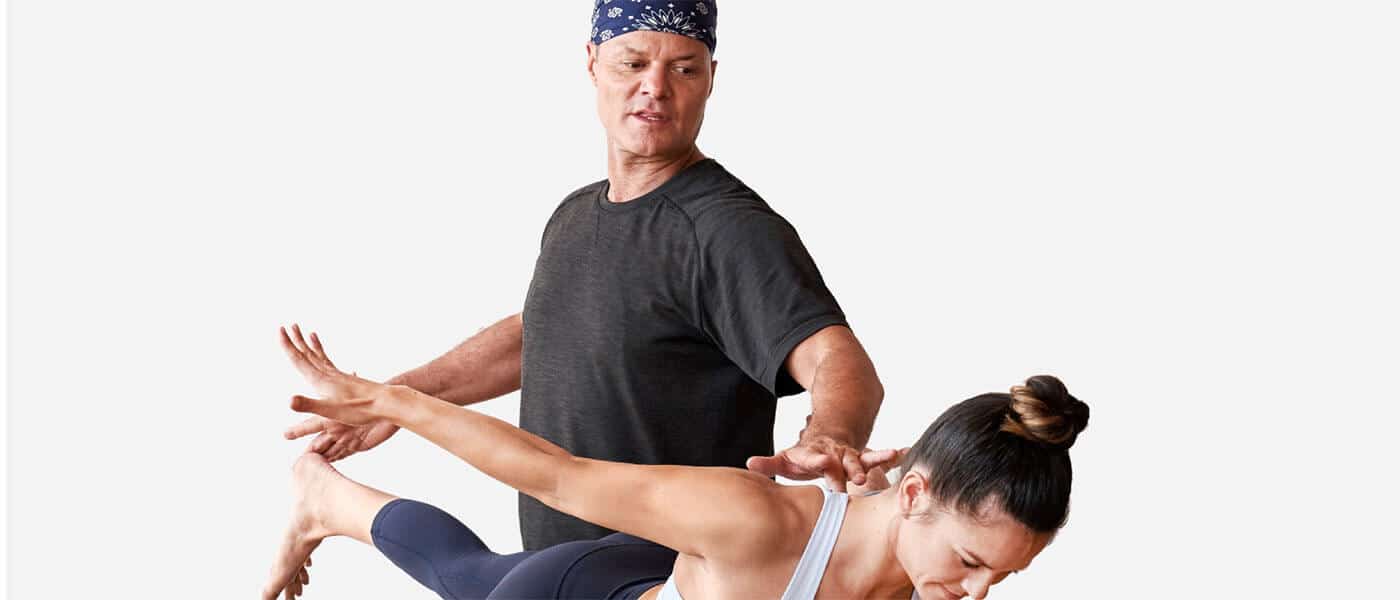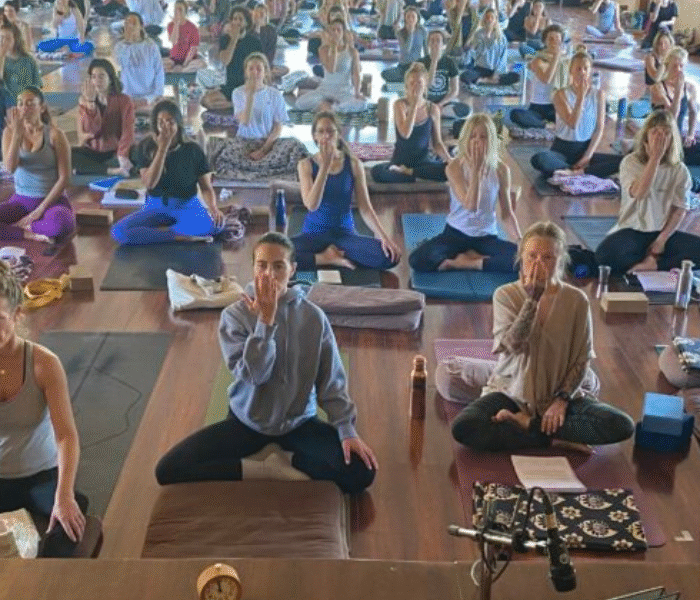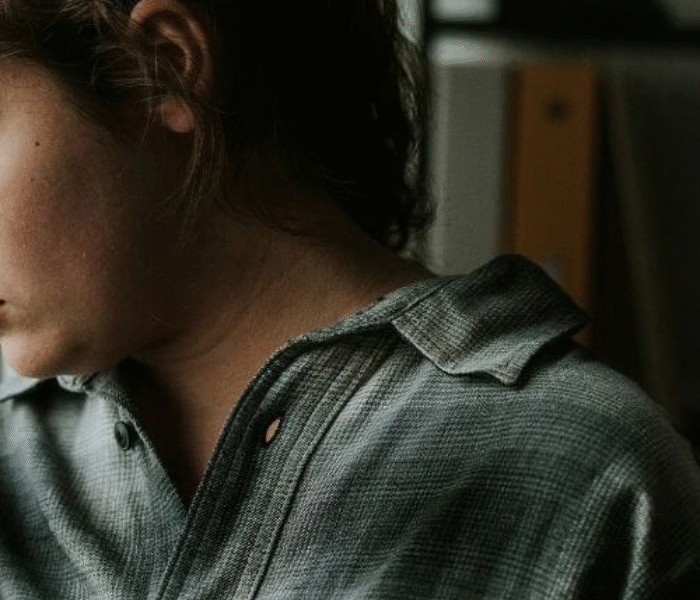Vinyasa practiceVinyasa Yoga: my journey into the breath, flow, and transformation of practice

Finding harmony in Vinyasa: how breath and movement create flow
Vinyasa yoga is more than a series of poses—it’s a dynamic, breath-centered practice where movement flows seamlessly from one posture to the next.
Known as the “yoga of connection,” Vinyasa links body, breath, and mind into a meditative dance that strengthens, balances, and transforms on and off the mat.
Core components of vinyasa yoga
A well-rounded Vinyasa practice integrates three essential elements:
- Moving from the Power Center: Each movement originates from your body’s intuitive core, often referred to as the “hara” or center of gravity. This creates stability and awareness in every transition.
- Biomechanically Safe Sequences: Postures are linked in a way that supports joint health, proper alignment, and functional strength, reducing the risk of injury.
- Breath as the Foundation: Each movement is guided by the rhythm of the breath (pranayama), creating a meditative flow that balances energy and calms the nervous system.
The philosophy of Vinyasa
The word Vinyasa is often translated as “that which is without obstruction.” At its heart, the practice is about creating flow—not just in the body, but in the mind and energy.
When we quiet the fluctuations of thought and dissolve mental and emotional blocks, the body begins to move with its natural intelligence. Each posture becomes not just a shape but part of a balanced, intentional, and mindful journey.
Etymology of Vinyasa
In Sanskrit, Vinyasa comes from the root nyasa, meaning “to place,” combined with the prefix vi, which signifies “in a special or unique way.”
Together, the term reflects the idea of intentionally placing movements and breath in a mindful sequence.
It emphasizes that every transition and posture is deliberate, not random—a practice of conscious awareness.
Vinyasa as a natural process
Vinyasa reflects the natural rhythm of growth and movement. When a child learns to crawl, then walk, and eventually run, each stage flows into the next in a seamless progression.
In the same way, a Vinyasa practice allows us to experience this natural evolution on the mat, beginning with foundational movements, building strength and confidence, and eventually finding freedom and grace in our flow.
This process is as much about opening the heart and mind as it is about moving the body.
Historical background
Modern Vinyasa yoga, as practiced in the West, can be traced back to the teachings of Tirumalai Krishnamacharya, a renowned South Indian yoga master.
Often called the “Father of Modern Yoga,” Krishnamacharya trained legendary teachers such as B.K.S. Iyengar and Pattabhi Jois, whose interpretations shaped many contemporary yoga styles. His approach emphasized linking breath and movement, adapting practice to individual needs, and viewing Vinyasa as a tool for healing and transformation.
Krishnamacharya’s influence on Vinyasa
Krishnamacharya viewed the Vinyasa approach as essential to yoga’s healing and transformative power.
He emphasized that sequencing postures with mindful breathwork could restore balance to the body and mind.
His teachings inspired the Ashtanga Vinyasa method popularized by Pattabhi Jois and influenced how flow-based yoga is taught worldwide today.
More than just a style, Krishnamacharya presented Vinyasa as a universal principle—applicable not only to asana practice but to living life with intention and presence.
Desikachar’s continuation
Krishnamacharya’s son, T.K.V. Desikachar, continued his father’s legacy with a strong focus on personalization. He believed that every practitioner’s body, mind, and life circumstances are unique, and therefore yoga should be adapted to meet individual needs.
This approach gave rise to Viniyoga, a method that tailors sequences step-by-step, respecting each student’s abilities and intentions.
Desikachar’s work reinforces the idea that Vinyasa isn’t a rigid set of postures but a living, adaptable process designed to serve the practitioner.
The practice of Vinyasa Yoga
A Vinyasa practice is built on fluid sequences that link movement and breath, guiding practitioners on both a physical and inner journey.
Teachers often modify postures and craft unique flows to meet the needs of each class or individual, allowing the practice to become a personalized path of discovery.
As you move from one asana to the next, the intention is to shift not only your body’s position but also your state of awareness—bringing you to a more balanced and awakened point within yourself.
The transformational power of Vinyasa Yoga
When Vinyasa is taught with room for adaptation and mindful modifications, it becomes a tool for deep personal transformation.
This practice doesn’t just strengthen muscles or improve flexibility—it reshapes how we respond to life.
The awareness and resilience cultivated on the mat carry into daily experiences, teaching balance, patience, and presence. In this way, Vinyasa becomes more than a yoga style; it’s a moving meditation that bridges practice and life beyond the mat.
The beauty of a vinyasa practice is that when lessons are learned on the mat, they can be applied in all life areas off the mat.
The balance of Stira and Sukha in Vinyasa
One of the core lessons of Vinyasa is embodied in the Sanskrit phrase sthira sukham asanam, a principle from the Yoga Sutras of Patanjali. Sthira (often spelled stira) means steadiness or purposeful action, while sukha means ease or comfort.
In Vinyasa practice, every posture and transition is an exploration of this balance: engaging strength and stability without losing softness and breath. Learning to find this harmony on the mat mirrors how we seek balance between effort and surrender in everyday life.
For new students
If you’re new to Vinyasa yoga, start by slowing down your practice to build a strong foundation. Focus on learning proper alignment and safe transitions under the guidance of a qualified teacher.
This early stage helps you develop body awareness and prevents injury as you grow.
Once you’ve established the basics, the practice becomes more intuitive, you can relax into the flow, trust your breath, and allow space for grace, strength, and joy to move you seamlessly from one posture to the next.
The essence of Vinyasa
At its core, Vinyasa is a meditative flow where breath and movement merge into one seamless rhythm.
This “moving meditation” nurtures the body, calms the mind, opens the heart, and uplifts the spirit.
Beyond physical fitness, the practice creates a holistic sense of balance and transformation that extends far beyond the yoga mat, touching every aspect of life.




